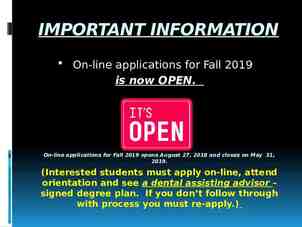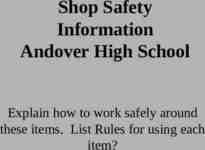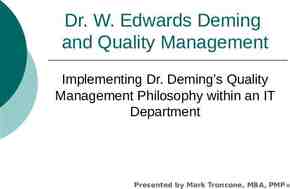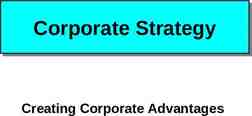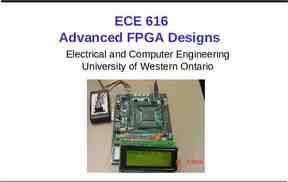Workplace Safety Committee Leadership Bureau of Workers’ Compensation
45 Slides818.68 KB

Workplace Safety Committee Leadership Bureau of Workers’ Compensation PA Training for Health & Safety (PATHS) PPT-109-01 1

Objectives Recognize and resolve potential areas of conflict Assume a leadership role in Committee Activities Delegation and coaching of Committee Members Understand People, Process and Problems Understand the role of the Committee Chairperson PPT-109-01 2

Safety Committees Foundation for a functioning Safety Program Provides a non-adversarial forum for discussing Safety & Health issues PPT-109-01 3

Question What do you feel is the primary purpose of your safety committee? PPT-109-01 4

Leadership Qualities Empathy – trying to understand other people’s perspectives but decide for the common good of all involved. Passion for Work – looking for ways to improve yourself, the Committee or the situation. Optimism/Enthusiasm – remaining positive and persistent in the face of setbacks and failures. PPT-109-01 5

Leadership Qualities Integrity – doing the right thing even if it’s not the popular thing. Comfort with Uncertainty – demonstrating openness to change and challenges. Self Confidence – a feeling of knowing who you are and what you stand for. PPT-109-01 6

Leader Traits Dedication to the mission Enthusiasm towards safety Knowledge of injury prevention Willing to learn PPT-109-01 7

Leader Traits Good communication skills Established working relationships Well organized Ability to generate action and bring closure to action items PPT-109-01 8

Quote “The most important thing in good leadership is truly caring.” - Dean Smith PPT-109-01 9

Safety Committee Leader Duties Set ground rules Define roles Stays neutral Is positive, has a win/win attitude Suggests process when needed PPT-109-01 10

Safety Committee Leader Duties Identify processes and procedures Enforces process agreements Ensures the group takes responsibilities for its actions Builds the agenda PPT-109-01 11

Safety Committee Leader Duties Facilitates Generating ideas/Data analysis Selecting Alternatives Stimulating Discussion Closure PPT-109-01 12

Recipe for Success Correct mix of members Representation from all departments Equal employee & employers or More employees than employers Understanding of all services & departments Access to agency’s upper management Ability to delegate PPT-109-01 13

Recipe for Success Understanding of data, budgets and processes Prioritizing and timing of projects Development of the committee Keeping track of activities Keeping motivated people motivated Coaching unproductive members PPT-109-01 14

Quote “It is amazing what you can accomplish if you do not care who gets the credit.” - President Harry S. Truman PPT-109-01 15

Motivators Achievement Belonging Recognition Growth & development Responsibility Job enjoyment Advancement Making a difference * Adopted from Frederick Herzberg PPT-109-01 16

De-Motivators Undesirable Policies Micro Management Poor working conditions Low Status Unhelpful fellow employees Job Security Poor Communication Bad working relationships * Adopted from Frederick Herzberg PPT-109-01 17

Leading the Committee Select participants Develop agendas Open meetings Establish ground rules for meetings Manage time Evaluate the meeting Close meetings PPT-109-01 18

Committee Foundation Mission and function “SMART” objectives Effective communication Mutual support, trust and respect Joint commitment to incident prevention PPT-109-01 19

Committee Foundation Effective problem solving Non-adversarial conflict resolution Identification of all member resources Utilization of all member resources PPT-109-01 20

Committee Membership Ensure all work areas are represented by employees knowledgeable in the tasks and risks of their areas. Managers should be recruited based on agency job knowledge and ability to assist in the resolution or implementation of safety and health items. PPT-109-01 21

Committee Authority Act as a recommending body Evaluates processes, procedures and equipment Advises on best safety alternatives Warns of potential dangers Influences work practices PPT-109-01 22

Committee Chairperson Accountable to management Selects members Sets/follows agenda Coordinates meeting logistics Facilitates meetings Uses committee resources/talents and makes sure everyone is heard PPT-109-01 23

Committee Chairperson Assists/follow-up with member assignments Encourages/assists sub-committees Ensures committee documentation Follows-up with committee recommendations Determines/schedules safety training and development activities. PPT-109-01 24

Quote “I praise loudly. I blame softly.” - Catherine the Great, 1729-1796 PPT-109-01 25

Committee Mission Sets the groundwork for the agency’s safety & health program Endorsed by all within the organization Signed by management Parallels the agency’s mission Communicated to everyone Understood by everyone PPT-109-01 26

“SMART” Goals Identify and prioritize Develop action plans Recommend improvements Monitor progress, keep records Establish responsibilities and accountability Continuously follow-up Revise as necessary PPT-109-01 27

Quote “In life, as in football, you won’t go far unless you know where the goalposts are.” - Arnold H. Glasgow PPT-109-01 28

Question The committee cannot agree on which goals are the most important. How would you bring the group to a consensus? PPT-109-01 29

Committee Problems Lack of purpose Insufficient resources Ineffective training Absence of leadership Lack of communication and follow-up Sporadic member participation Special interest domination PPT-109-01 30

Question What is a “Meeting Negative” that you have experienced? PPT-109-01 31

Negative People Blocker – interferes with progress Non Participant – indifferent and passive Fighter – aggression, blame, hostility Dominator – my way is the right way Clown – jokes, inappropriate laughter Politician – changes sides, lacks a position Stickler – interrupts Whisperer – has private talks with others PPT-109-01 32

Intervention Techniques Boomerang the question back to the group when they should answer it: “How does the rest of the group feel about this?” Maintain/regain focus: “What’s the real issue here?” Say what’s going on when destructive behavior occurs. Encourage all members to participate Don’t be defensive; let the group decide what’s correct or not. Use positive body language. PPT-109-01 33

Successful Safety Meetings Schedule in advance Attend all meetings Adhere to time frames Avoid side-bars, non-essential talks Listen to your members Encourage participation Meet on ideas not people PPT-109-01 34

The Agenda Send a copy to all members and invitees in advance Date, time, specific location Topic/action/time allocation Data analysis/inspection results New and old business Agenda Action items status Roundtable of issues Adjournment time PPT-109-01 35

Decision Making Style Buzzing Bee Buzzes around trying to get consensus. Includes others in decision making to learn their viewpoints and gain their commitment. Sometimes drags out decision making until decision is reached through consensus building when consensus wasn’t required or perhaps appropriate. PPT-109-01 36

Decision Making Style Charging Bull Relentlessly attacks a decision that needs to be made. Helps move decision making along so that decision is made in a timely manner and issues are resolved. May sometimes stampede others into decisions. PPT-109-01 37

Decision Making Style Soaring Eagle Prefers to view issues from 10,000 feet. Sees the big picture and helps others understand the issue, needs, and impacts. Sometimes doesn’t demonstrate enough interest in the details of a decision. PPT-109-01 38

Decision Making Style Dogged Bloodhound Noses around to uncover data needed for good decision making. Provides the facts needed to make good decisions. Sometimes ties up decision making because still more facts are needed. PPT-109-01 39

When to Use Group Decision Making Highly technical decisions where you are not the expert. When success will depend on the support of the team. When the result of the decision is critical. When you have a highly-competent, motivated team. PPT-109-01 40

Leading By Example This leadership style requires that employees treat one another with trust and respect. Leaders increase effectiveness by modeling the organization’s expectations: Attendance Punctuality Breaks Speaking negatively about other employees Commitment PPT-109-01 41

When to Delegate You trust others to make the correct decision. Your time and expertise could be better focused elsewhere. Team involvement is not critical for success. There is unlikely to be controversy about the decision. PPT-109-01 42

Summary Chairpersons have: to be a leader, coach and instructor to bring issues to closure to select and use member’s talent Good safety meetings are the result of organization, preparation and viewing issues as opportunities. PPT-109-01 43

Contact Information Health & Safety Training Specialists 1171 South Cameron Street, Room 324 Harrisburg, PA 17104-2501 (717) 772-1635 [email protected] Like us on Facebook! https://www.facebook.com/BWCPATHS PPT-109-01 44

Questions PPT-109-01 45

